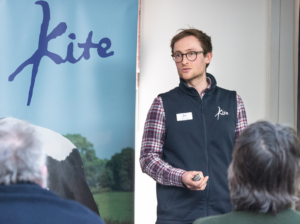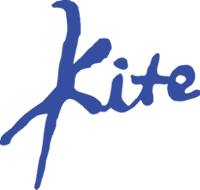Don’t lose focus
When faced with a declining milk price, labour shortages, fluctuating feed costs and legislative uncertainty, now more than ever, clear business strategy will be key to securing the long-term success of any dairy businesses. But in an increasingly volatile marketplace, understanding how best to develop this strategy can be incredibly difficult.
“We’re predicting a declining profit situation for most dairy producers going into 2024,” explains Kite Consultant, Edward Lott. “So of course, we need to address the immediate issues on farm that will help mitigate the negative impact this will have on business performance. But it’s important that these short-term issues don’t become a distraction. What we also want to stress to producers is the need to think about the bigger issues in the industry and to think long-term.
“Staff, feed security, and efficiency – these are the key issues that we’re facing in the future and it’s important that planning and investment is being made in these areas now, to secure the long-term future of many farms.”
People power
When visiting dairy units across the country, one of the common themes that Kite Consultants identify is a struggle for producers to find and retain good labour. And with the potential dairy labour pool likely to decline further in the future, Kite Consulting’s Kaia Hillsmith stresses that for any business looking to secure its long-term viability, having a good recruitment and retainment plan in place was crucial.
“Many businesses are stuck in a negative cycle, where they recruit a new member of staff, spend up to six months training them and getting them up to speed, only to see that individual quickly leave,” explained Kaia. “Not only is this time consuming, demoralising, and disruptive but it also generates a high level of uncertainty within a business.
“Many producers will have a big focus on recruitment, but that time and effort is often better spent on retainment. It’s more efficient to keep the staff you have, rather than constantly going through the recruitment cycle.”
And while providing staff with good facilities, pay and progression prospects is important, effective leadership is key to staff retainment.
“Good leaders will attract new staff and keep existing staff in place,” continued Kaia. “One skill that good leaders have is managing staff according to their personal preferences.
“For example, younger members of staff generally don’t want to be told what to do. They respond better to being set a challenge and given the responsibility of solving a problem themselves. This might go against a producer’s natural management style, but being conscious of things like this will make for a better, more effective leader.”
Focus on homegrown forage
Another factor that dominates discussions between dairy producers is feed costs. To help decrease the exposure to volatile feed markets in the future, Marcus Doig emphasises the importance of producers reducing their reliance on purchased feed by increasing homegrown forage quality and quantity.
“In particular, producers should be looking to increase the amount of protein they can grow on farm,” explains Marcus. “This can be achieved through several strategies, such as incorporating white clover into grass leys, taking a multicut approach to silaging, growing red clover and even considering alternative forage crops, like lucerne.”
And with fertiliser prices finally on the decline, producers were also reminded that investing in inputs to increase forage protein values might also represent a more cost-effective option than buying in feed.
“If producers want grass that hits 17% protein, they need to support that growth with adequate levels of nitrogen, and this is a viable option now,” continues Marcus. “Producers need to invest to get the best quality grass silage, and this goes beyond just fertilisers. Taking a multicut approach and cutting grass earlier in the season has a big impact on silage quality and quantity. While producers might look to produce around 529kg protein/acre on a three-cut system, those operating a four-cut approach would expect to increase this to 756kg.”
Feed efficiency
And with producers being urged to invest in making better quality forages, Kite Consulting’s Maimie Sloan highlights the long-term importance of developing cows that will utilise this feed as efficiently as possible.
“We have growing global demand for milk, but environmental pressure to reduce the carbon footprint from the cows producing this milk,” explains Maimie. “Improving a cow’s feed efficiency is key to meeting this challenge and to supporting long term business sustainability. If producers can get a cow to produce the same level of milk for less feed, or more milk for the same level of feed, then they’re in a very strong position.”
Maimie points out how important genetics and developing detailed breeding plans will be to produce more feed efficient cows in the longer term, but also highlighted the effectiveness of feed additives in the shorter term.
“There are some very effective live yeast supplements on the markets, and they can have a significant impact on cow performance,” concluded Maimie. “These supplements have been shown to complement traditional buffers and help provide a balanced, stable rumen environment that enables rumen microbes to work more effectively and process food more efficiently.
“When looking to develop future-proof sustainable, dairy businesses, feed efficiency needs to be a priority. Luckily, we have the tools available to make this happen and Kite Consulting are always on hand to provide advice, as required.”



